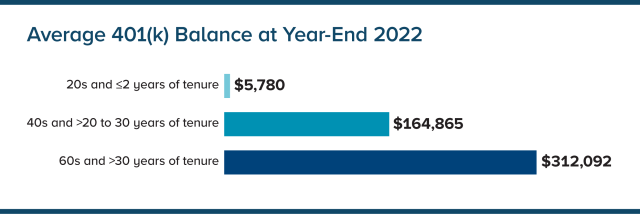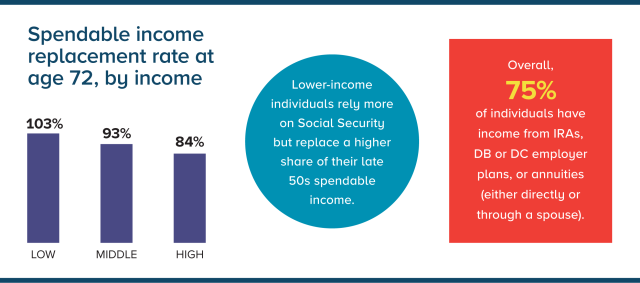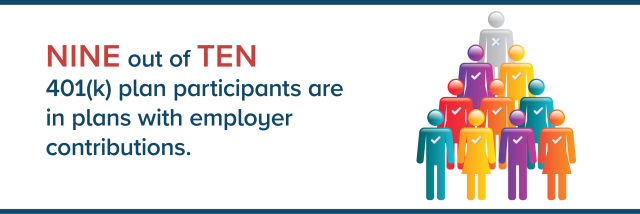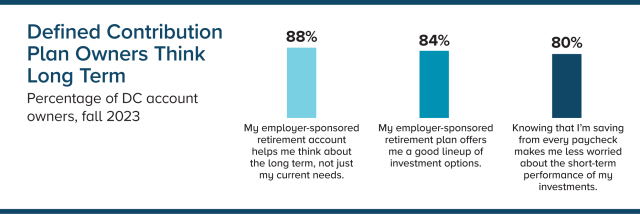ICI Viewpoints
Americans’ Retirement Savings Show Real Progress
With more than $25 trillion in assets, IRAs, 401(k)s, and similar retirement accounts are a growing source of financial security for everyday Americans. Balances in these accounts have climbed to or near record highs, helping the average long-term saver build a meaningful nest egg. And while increases in the cost of living have made it harder to set money aside for the future, retirement savings trends are nevertheless on the upswing, indicating that Americans are focused on and taking a more proactive approach toward their golden years.
Putting the Stats in Context
Some articles highlight that the median 401(k) account balance is around $20,000, suggesting that the typical retiree will run out of money. But that figure is misleading. First, it captures the full range of account owners—including, for instance, someone in their 20s with an entry-level job and a modest account balance—instead of focusing on older participants with a longer savings history. In reality, 401(k) savers approaching retirement age are in a far better position.

Second, a single snapshot of a 401(k) balance misses the fact that many households own multiple retirement plan accounts, not to mention IRAs, their homes, and other assets. As with 401(k) participants, long-term IRA investors have benefited from time in the market. At the end of 2023, households that owned IRAs for 20 or more years had average IRA holdings of nearly $400,000, while those owning IRAs for less than 10 years had about one-quarter that amount.
While those growing balances are important, income replacement is a better gauge of how retirees are faring. Analysis of tax data shows that—adjusted for inflation, taxes, and retirement savings—the typical 72-year-old replaces over 90 percent of the income they had in their mid- to late-50s, thanks in large part to distributions from 401(k)s, IRAs, or other retirement plans, in addition to Social Security.[1]

Retirement Savings Trends Look Favorable
Despite lingering inflation pressures on households and businesses, retirement savings trends are moving in the right direction. Employers are doing their part, as 90 percent of 401(k) participants are in plans with employer contributions. What’s more, data from Vanguard and Fidelity, two of the largest retirement plan recordkeepers, indicate that total savings rates in the plans they service, combining employee and employer contributions, recently registered record highs.[2]

Retirement Savings Help Households Focus on Long-Term Planning
Importantly, American workers’ first introduction to saving and long-term investing is often through their 401(k) plan at work. Most owners of defined contribution (DC) plan accounts, which include 401(k)s, agree that their employer-sponsored retirement account helps them think about the long term and offers a good lineup of investment options.

IRA-owning households, who often have rollovers in their traditional IRAs, also have a long-term focus, building strategies to manage income and assets in retirement. In 2023, among traditional IRA-owning households with such a strategy, 78 percent indicated they consulted with a financial professional to develop their strategy.
The Facts Are Clear
IRAs, 401(k)s, and similar accounts are working for most US households, focusing them on the long run, building wealth, and ultimately providing income in retirement. Through these accounts, Americans are navigating difficult economic conditions to boost their retirement savings and strengthen their long-term financial security. While there is room for further improvement, that progress is cause for celebration.
Notes
[1] Part of the IRS Statistics of Income Joint Research Program, the study used tax data to follow individuals born in 1945 from the time they were aged 55 (in 2000)—before they could claim Social Security retirement benefits—until they were aged 72 (in 2017)—after they could claim their maximum Social Security benefits and after they were required to begin taking distributions from employer plans and traditional IRAs. Tax data allowed us to accurately measure changes in the amount and composition of each individual’s income over this age range.
[2] See Vanguard, How America Saves 2024, and Fidelity® Q1 2024 Retirement Analysis.
Steven Bass is an Economist at ICI.
Michael Bogdan is an Associate Economist at ICI.
Adam Sands is a Senior Writer at ICI.
Daniel Schrass is an Economist at ICI.
